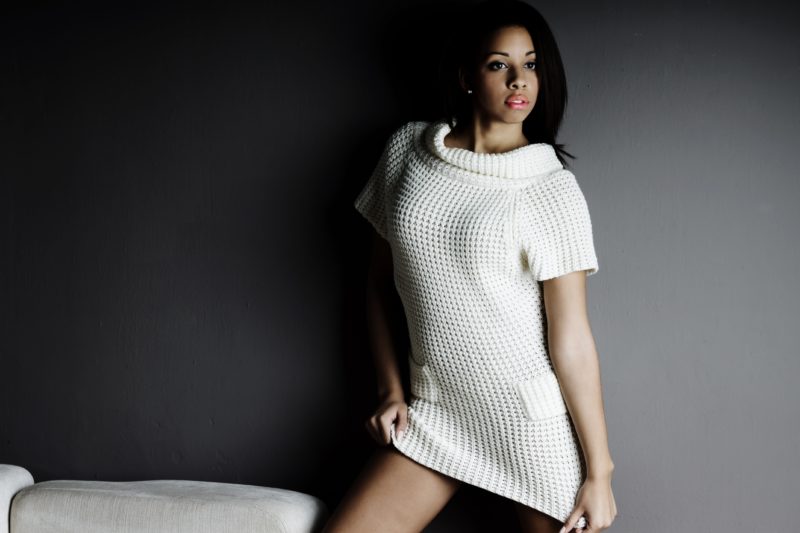Whether you’re just starting out or are a seasoned tailor, the tools for dressmaking remain the same. Investing in quality equipment not only makes the job easier, it also can improve your results. Here are some of the essential tools for dressmaking you’ll need to create great looking clothing with minimal effort.

Top 10 Tools for Dressmaking
1. Cutting table
When a professional costumer was asked what one thing makes the difference between loving and hating sewing, she replied, “a proper cutting table.” Not having a proper table can lead to back, neck and shoulder pain. According to OHSA, a sturdy table should be at elbow height and have padded edges.
2. Scissors
One of the most common sewing tips for beginners is to make sure you have good scissors. Every seamstress needs at least three pairs. Each has its own purpose, and heaven help the fool who uses your good fabric scissors on paper. Sharpness is critical for effective, clean cutting, and using fabric scissors on paper or anything other than fabric instantly dulls the blade. Many seamstresses mark their sewing scissor with a marker or a string of some kind tied to the handle to avoid them being misused.
• Sewing Shears: The first, and most important, is a pair of quality dressmakers’ shears. Quality-tooled shears such as the Fiskars Shears can dramatically reduce hand fatigue, and a long blade helps ensure straighter cuts.
• Utility or All-Purpose Scissors: Whether you use pre-printed patterns or draft your own, you’ll need good utility scissors to cut clean lines on the paper.
• Thread Snips: A pair of small, sharp blades helps to cut all those loose threads from your finished product. Embroidery scissors or thread snips such as the Kotobuki Thread Scissors will help get keep things looking tidy.
3. Sewing Machine
You don’t need to go with all the bells and whistles on a sewing machine to produce quality garments. Forward, reverse, and zigzag are the bare essentials. Buttonhole stitch is also helpful. If you make a lot of garments, you may want to invest in a specialized serger sewing machine. While some sewing machines offer overlock stitches, nothing beats the speed of a serger for finishing seams and raw edges.
4. Measuring tools
Sewing requires taking lots of measurements. You’ll need different types of measuring tools for different jobs.
• Measuring Tape: Flexible measuring tape is needed for taking body measurements. You need to be able to follow all the bumps and curves of the human body to get proper fitting garments.
• Clear, Rigid Ruler: This is especially helpful when altering or drafting patterns so you can see exactly where your previous line was.
• Yard Stick: An old fashioned, wooden yard stick is helpful when drawing long lines such as straight seams and hems. Alternatively, you can use carpenter’s tools such as a t-square.
5. Marking Tools
You’ll use a lot of different marking tools for dressmaking. Regular pencils are usually best when drafting or altering patterns on paper. Once their pattern is complete and tested, many sewers will mark the patterns with a permanent marker to indicate the pattern, piece, date, who it fits, and if it has seam allowances or not. Here are several options for marking on fabric.
• Wash Away or Disappearing Ink: Whether you’re drafting right on the fabric or tracing a pattern, you have a few choices for marking fabric. If you’ll be sewing the fabric right away, disappearing ink is a great way to mark cutting lines, notches, and other symbols. Other types of markers allow you to wipe away the ink with a simple, damp cloth.
• Chalk: You’ll find chalk in three main forms. The most common (and inexpensive) is the square tailor’s chalk. For even easier application, you can use chalk pencils. You can also find a chalk wheel that utilizes loose chalk.
6. Pattern Weights
An easier alternative to pinning a pattern to fabric for tracing or cutting is to use pattern weights. It’s much quicker than pinning, and it won’t leave all those little holes. You’ll want enough weights to secure the pattern every place it bends or curves. You can use large bolts or washers, make your own small bean bags, or use these handy Prym Fixing Weights.
7. Seam Ripper
Even the most experienced sewer has to ream out seams sometimes. Some even say that a dress is never complete unless you had to rip out at least one seam. A fresh, sharp seam ripper can make this annoying task go much faster so you can get back to the fun part. Having sharp seam rippers is so important that the manager of a university costume shop replaces her entire supply of seam rippers every year.
8. Iron and Ironing Board
While it’s tempting to skip ironing seams while in production of a garment, taking the time to iron will deliver better results. It’s also important to iron your fabric even before you get to that stage. To get the most accurate cuts out of your fabric it is recommended that you iron the fabric before laying out and cutting. Nothing can ruin a pattern like an extra fold in the material that you didn’t notice before you cut into it.
9. Mock-up Fabric
When making tailored clothing, doing a mock-up with inexpensive material first is critical to getting a well-fitting finished garment. You can test the fit and make adjustments before cutting into that gorgeous, expensive fabric. Many people use muslin, but you can also hit garage sales and thrift stores to load up on cheap cotton sheets to use for your mock-ups.
10. Dressmaker’s Dummy
An adjustable dress form can prove invaluable when piecing garments together. When you adjust the form to fit your measurements, you can even use it to drape the fabric for pattern making. It’s also helpful for quickly seeing how the pieces will flow when worn without having to stop what you’re doing.
Once you have all your tools for dressmaking, you’re ready to load up with patterns and fabric and let the fun begin. How about making your own graduation dress? Dressmaking is so much easier, and more enjoyable, when you have the right tools. Investing a little money in quality products will save you time and effort and help give you results you’ll be proud of.
Thank you Alex Moore for this wonderful article,

